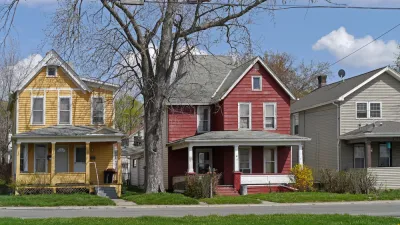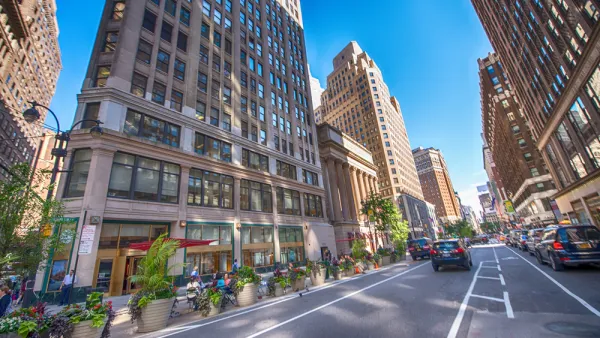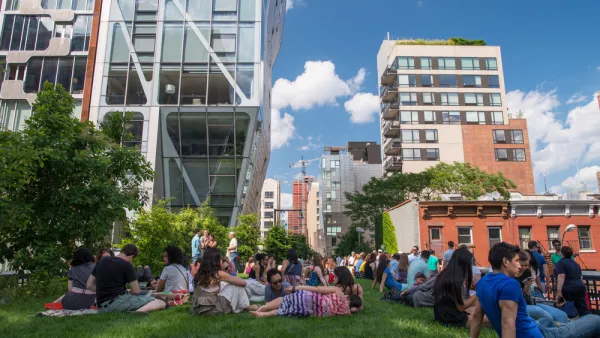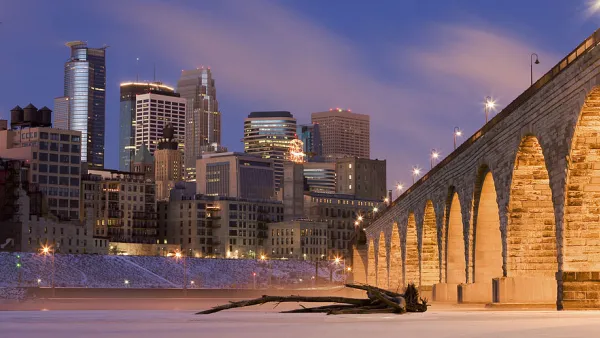In the election's wake, Richard Florida compiles some telling statistics on the nation's threatened middle class. It's on the decline, yes, but it's also becoming more segregated into certain cities, often in the Sunbelt and Rust Belt.

We've all seen the statistics on America's shrinking middle class. But how is that decline dispersed geographically, especially in metro areas? Richard Florida discusses data from Pew covering 2000 through 2014.
For one thing, a process of segregation is taking place, dividing metros and neighborhoods more thoroughly by income. "Nationwide, 172 of 229 metros saw growth in affluent, upper-income households in the past decade and a half; 160 saw an increase in the share of low-income households; and roughly half, 108, experienced both." Also, "[t]he share of American families living in either all-poor or all-affluent neighborhoods more than doubled, increasing from roughly 15 percent to nearly 34 percent."
Florida points out that across the country, cities are seeing their middle classes shrink. "What really stands out is that every single large metro (over one million people) saw its middle class decline. In fact, less than 10 percent of all U.S. metros saw any increase in their middle class whatsoever, with most of these gains being in the range of one percent. The large metros where the middle class is smallest are a combination of superstar cities, tech hubs, resource economies and poorer places. [Among large metros] L.A. has the smallest middle class overall, followed by San Francisco, New York, and San Jose."
From the maps included, it's clear that the metros with the largest middle classes tend to be in places that favored Donald Trump this year. "Simply put, a big part of our national economic dilemma is this: the middle class is larger in declining places and smaller in growing ones. This is especially troubling as a large middle class remains a bulwark against rising economic inequality."
FULL STORY: The Geography of Middle Class Decline

National Parks Layoffs Will Cause Communities to Lose Billions
Thousands of essential park workers were laid off this week, just before the busy spring break season.

Retro-silient?: America’s First “Eco-burb,” The Woodlands Turns 50
A master-planned community north of Houston offers lessons on green infrastructure and resilient design, but falls short of its founder’s lofty affordability and walkability goals.

Delivering for America Plan Will Downgrade Mail Service in at Least 49.5 Percent of Zip Codes
Republican and Democrat lawmakers criticize the plan for its disproportionate negative impact on rural communities.

Test News Post 1
This is a summary

Test News Headline 46
Test for the image on the front page.

Balancing Bombs and Butterflies: How the National Guard Protects a Rare Species
The National Guard at Fort Indiantown Gap uses GIS technology and land management strategies to balance military training with conservation efforts, ensuring the survival of the rare eastern regal fritillary butterfly.
Urban Design for Planners 1: Software Tools
This six-course series explores essential urban design concepts using open source software and equips planners with the tools they need to participate fully in the urban design process.
Planning for Universal Design
Learn the tools for implementing Universal Design in planning regulations.
EMC Planning Group, Inc.
Planetizen
Planetizen
Mpact (formerly Rail~Volution)
Great Falls Development Authority, Inc.
HUDs Office of Policy Development and Research
NYU Wagner Graduate School of Public Service





























